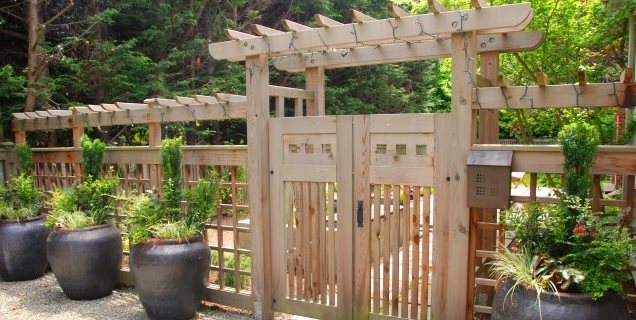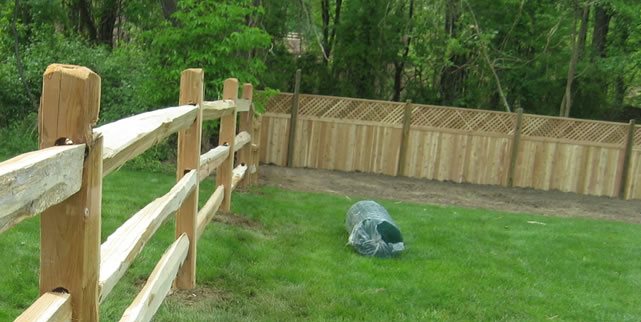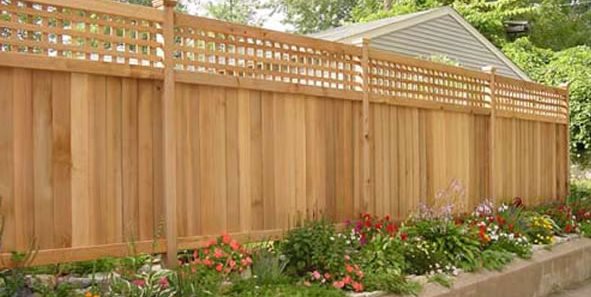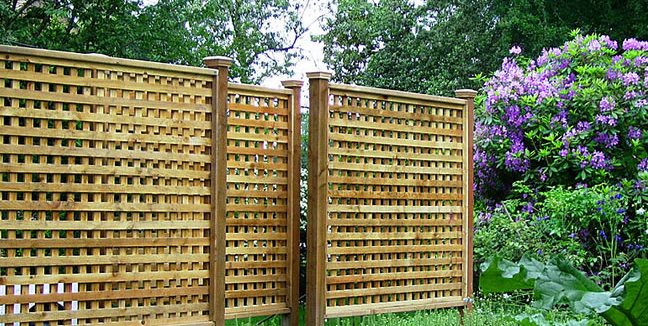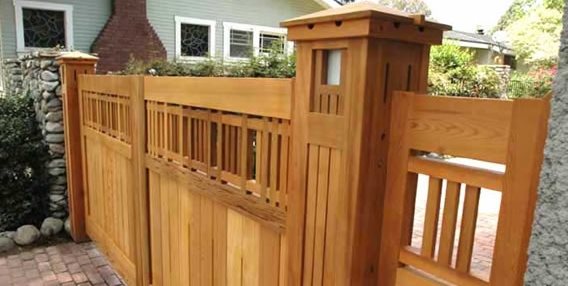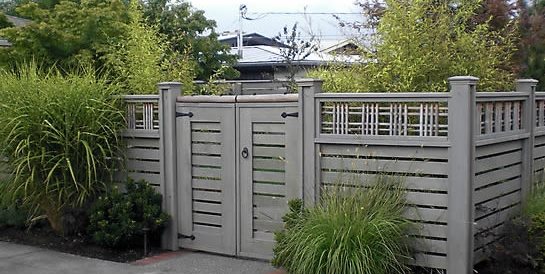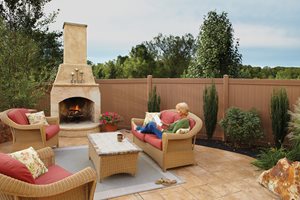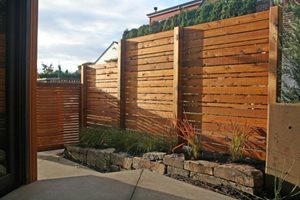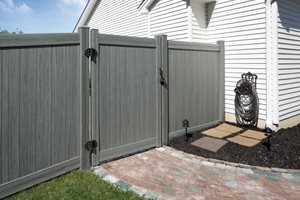Wood Fencing
The pros & cons of installing a wooden fencePros:
- Natural appearance
- Affordable
- Versatile - many design & style options
- Easy to install and repair
- Can be finished with stain or paint
- Easy to fix decorations, lights and planters to
Cons:
- Annual maintenance required
- Weathers quickly
- May rot due to moisture
- May warp due to moisture
- Can become infested with insects like termites
- Posts can fail and cause the fence to lean or fall
All-wood privacy fencing has long been the standard of the typical American home. Fence design can vary considerably from a basic board fence to one that is beautifully detailed with finials and elaborate carpentry. In the beginning the wide availability of redwood and cedar made these a logical choice due to their affordability and resistance to decomposition. Today the rising cost of redwood and overall increase of lumber prices have made homeowners consider other manufactured products to replace the traditional wood fence.
Wood Fence Design Options
The shadowbox or board on board fence is the age old solution that looks equally good on both sides, both for you and your neighbor. This open design also allows greater air circulation which increases the life of the fence and keeps your yard more comfortable. Chad Hoover of Hoover Fence warns that if privacy is your chief consideration, this fence design may provide glimpses through if seen from just the right angle.
"A shadowbox fence is only slightly more expensive than a solid dog ear fence style. It uses only a few more boards but is slightly trickier to build. It’s unique in that it has boards/pickets on both sides of the horizontal rails/ runners. This creates truly a neighbor-friendly fence as there really isn’t a ‘face’ or backside to the fence style; it looks practically the same from both sides. Vertical pickets are spaced 2” to 3” apart with alternates on the other side of the fence.
Lumber Choice
Cedar is the most common fence wood due to its resistance to decomposition. Depending on the location, Hoover Fence will use western red cedar, white cedar or inland cedar and out west redwood is available. Treated pine is also very common.
Pacific Sunscapes in San Diego is finicky about its fence wood. "We don't buy in bulk - we hand pick our boards every year from the wholesalers. We're big on steel structure with wood boards. With wood, even if done right they rot and they wobble creating lean in the fence. That won't happen with steel posts.”
Tips for making your wooden fence last longer:
- Use a wood species that has proven itself outdoors (cedar, redwood, cypress or pressure treated pine)
- Select the best wood grade you can afford, the clearer the wood the better
- Use steel posts rather than wooden posts, they will last longer and provide stronger support for your fence
- Have the fence built so that the wood does not touch the ground, this will reduce the risk of moisture problems such as rotting, warping and splitting
Building a Wood Fence Yourself
Chad Hoover of Hoover Fence is an authority on wood fencing, both as a DIY project and as built by your fence or landscape contractor. "Do it yourself wood fences are still common. Most homeowners own a few common wood working tools such as a circular saw, hand post hole diggers, cordless drill, hammer and nails. There are other specialty tools available, but these will get the job done."
How to Build a Fence - Nine steps for installing a fence
"A quick trip to most local lumber yards can produce prebuilt fence panels, or ‘stick-built’ supplies. We also offer both and are readily available to provide ‘know-how’ advice and tips for customers wishing to save a buck and build a quality fence. I would caution do-it-yourself customers to look carefully at prebuilt wood fence panels available locally. These are often an unsuitable long-term fence. At least if you’re going to build your own fence, invest in decent materials which are thicker than commonly used on prebuilt fences and a better grade. Beware of steel staples, or nails on prebuilt fence panels. These are often already rusting and ‘bleeding’ red rust down your new fence."
"Consider buying a quality #1 or #2 treated rail, post and picket. Attach fence panels to posts with outdoor grade decking screws and use aluminum, or stainless steel nails (often air-driven). Pneumatic air nailers are often readily available at tool rental stores and for a very small investment, you can drive a much better fastener and at a much better speed!"

 Backyards
Backyards
 Front Yards
Front Yards
